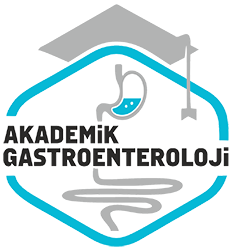Aralik 2023
Asiri demir yüklenmesi ve hemokromatozis
Iron overload and hemochromatosis
- Ana Sayfa
- Sayılar
- Aralik 2023
- Asiri demir yüklenmesi ve hemokromatozis...
Özet
Giriş ve Amaç: Uzun süreli (on yıl) takip ettigimiz aşırı demir yüklenmesi ve hemokromatozis olgularimiz isiginda ortaya çikan bulgulari, tanı vetedavideki zorluklari ve eksik yanlarimizi değerlendirmeyi amaçladık. Gereç ve Yöntem: 2012-2022 yıllari arasında takip ettigimiz, aşırı demirbirikimi olan hastalar bilgisayar kayitlarindan retrospektif olarak değerlendirildi. Transferrin satürasyonu %45’ten yüksek ve serum ferritin düzeyleri erkeklerde 300 ng/dl, kadınlarda 200 ng/dl’den yüksek olan toplam 28 hasta saptandi. Hastalarda hemokromatozis için genetik testler yapildi.Genetik testlerin pozitif veya negatif olusuna göre hastalar analiz edildi. Bulgular: Toplam 28 hastadan 17’si H63D heterozigot, bir hasta H63Dhomozigot olarak bulundu. C282Y ve non-HFE hemokromatozise ait gen mutasyonu saptanmadi. On hastada herhangi bir mutasyon saptanmadi.Yirmi sekiz hastanın tümünde transferrin satürasyonu %45’ten büyük ve ferritin düzeyi 300 ng/dl’den yüksekti. H63D heterozigot bulunanlarin10’unda (%58.8), mutasyon saptanmayanlarin 5’inde (%50) hepatosteatoz saptandi. Heterozigot pozitif olan grupta mutasyon saptanmayanlaragöre demir birikimi biraz daha yüksekti (ortalama ferritin düzeyi 1478 ng/dl’ye 827ng/dl). Hastaların hepsinde hepatit B yüzey antijeni negatifti.Bir hastada anti-hepatit C virüsü pozitifti. Magnetik rezonans çekilen 16 hastada demir yüklenmesi düsündüren sinyal kaybi bulgusu bildirilmedi.Still hastalığına ilişkin ates, artralji gibi bir bulgu saptanmadi. Sonuçlar: aşırı demir yüklenmesi sik karsilasilan bir durum olmamakla birliktesaptandiginda ayirici tanısı zordur. Herediter hemokromatozis ve non-HFE hemokromatozis bunlarin çok az bir kismini olusturur. Bulgularimiz aşırıdemir birikmesinin En sık sebeplerinden birinin non-alkolik yagli karaciger hastalığına bagli olduğunu göstermektedir.
Abstract
Background and Aims: We aimed to evaluate the findings, difficulties in diagnosis and treatment, and our shortcomings in the light of iron overload and hemochromatosis cases that we followed for a long time (ten years). Materials and Methods: Patients with excessive iron overloadthat we followed between 2012 and 2022 were evaluated retrospectively from computer records. A total of 28 patients with transferrin saturationhigher than 45% and serum ferritin levels higher than 300 ng/dl in men and 200 ng/dl in women were detected. Genetic testing for hemochromatosis was performed on the patients. Patients were analyzed according to whether the genetic tests were positive or negative. Results: Of the17 of 28 patients were H63D heterozygous and 1 was H63D homozygous. No gene mutations of C282Y and non-HFE hemochromatosis weredetected. No mutation was detected in 10 patients. Transferrin saturation was greater than 45 percent and ferritin level was higher than 300 ng/dl in all 28 patients. No patient received blood transfusion. Hepatosteatosis was detected in 10 (58.8%) of those with H63D heterozygous and 5(50%) of those without mutation. Iron accumulation was slightly higher in the heterozygous positive group than in those without mutations (meanferritin level 1478 ng/dl vs. 827 ng/dl). All patients were negative for hepatitis B surface antigen. One patient was anti-hepatitis C virus positive.Signal loss suggestive of iron overload was not reported in 16 patients who underwent magnetic resonance imaging. There was no finding relatedto Still’s disease such as fever or arthralgia. Conclusions: Although iron overload is not a common condition, its differential diagnosis is difficultwhen detected. Hereditary hemochromatosis and non-HFE hemochromatosis constitute only a small part of them. Our findings show that one ofthe most common causes of excessive iron accumulation is due to non-alcoholic fatty liver disease.



